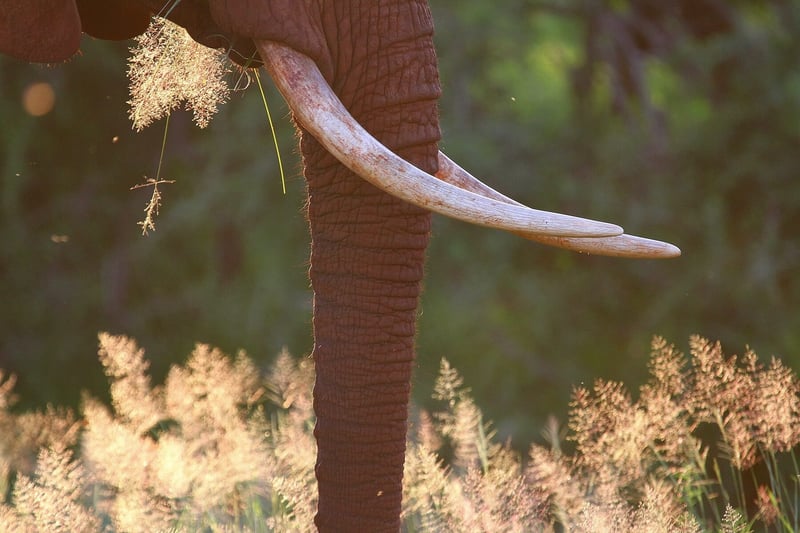
Five Myths about Elephant Rides and Shows
News
Contrary to what is often claimed, there is a cruel reality behind the use of elephants in rides and shows, which tourists are largely unaware of. Here we refute five of the common myths about elephants in the tourist entertainment industry.
Myth 1: Elephants are domesticated animals
‘Domesticated’ means that an animal species has been selectively bred by humans for many generations to have particular physical characteristic and behaviours. Domestic animals have undergone genetic changes that allow them to readily adapt to captive conditions alongside humans.
When elephants are described as domesticated, it leads people to believe that the animal has lost its wild instincts and adapted to life in human company like dogs or horses. But even if born in captivity, elephants are wild animals.
By the time you come to ride an elephant, it may appear docile and calm but this is because its spirit has been broken. The breaking of the spirit, also called Phajaan or ‘the crush’, is exceptionally cruel. It involves physical restraints and withholding food and water, and in many cases severe pain is inflicted. Bullhooks are the most common tools use by elephant trainers (mahouts). They usually have sharp metal hooks at the end and are used on the sensitive areas of the elephant’s skin to force obedience.
The crush is intended to permanently establish human dominance and is an intensely stressful process for wild-caught and captive-born elephants.
All elephants used for riding and performing have been ‘broken in’ in this way to accept human control. Coercion and fear are the principles by which an elephant in the tourism industry is tamed, but not domesticated.
Myth 2: There are responsible elephant rides
There are simply no responsible elephant rides or shows. As well as the cruelty involved in breaking in an elephant to perform or carry riders, involving severe physical and psychological abuse, their ongoing physical well-being is forever damaged by the jobs they are forced to do.
Elephants may be large and strong but their backs are not built for heavy loads. The saddle and weight of passengers can cause pain and injuries. They are also not physically built to stand on their hind legs as they do in shows. These tricks are performed only because of being trained through pain and fear.
Most elephants are chained for long periods between shows and rides, very often in isolation. This causes stress and unnatural behaviours such as ‘weaving’, where they compulsively move their heads from side to side. Elephants are intelligent and social heard animals. In the elephant entertainment industry, their complex social needs cannot be met.
Myth 3: Keeping elephants in captivity ensures the conservation of elephants in the wild
Keeping elephants for tourism in fact damages their conservation status. Reproduction rates of elephants in captivity are extremely low and do not meet the demand for new elephants in the tourism industry.
Consequently, elephants are poached from the wild to fuel tourist entertainment. This is considered a major threat to the wild Asian elephant population which has declined dramatically over the last century.
Capturing elephants in the wild is a brutal activity and there are increasing reports of protective mothers and aunts killed in the capture of young elephants. Most of the captured elephants are born in Myanmar and then smuggled across the border to Thailand for use in the tourism industry, where an elephant calf can fetch around 33,000 USD.
Myth 4: Elephants in the tourism industry come from the logging industry
Until 1989, elephants in Thailand were largely used in the logging industry, but a state-wide ban on commercial forestry left many elephant owners without a source of income. The tourism industry became a prime opportunity for them to earn a living.
But a quarter of a century after the banning of logging, these elephants are now old or have died. However the number of tourist venues with elephants has grown, while it is estimated that the number of captive elephants has remained stable. The animals now used in these venues are not old working animals, but are either captured from the wild or bred in captivity to spend their lives in chains.
Across Asia it is estimated that as many at 75% of the adult elephants, used for tourist rides today, have been wild caught, although the number is difficult to validate.
Myth 5: Tourists demand elephant rides
Many tourists see elephant rides as the highlight of their holiday. However, this wish is often stems from a lack of awareness of the abuse involved. As soon as they become aware of the suffering caused by elephant rides and shows, their enthusiasm quickly wanes.
Raising awareness about the hidden cruelty behind elephant rides and shows is crucial. Tour operators and travel agencies are perfectly placed to inform travellers of the conditions which elephants in the entertainment industry endure.
A desire to see elephants is of course perfectly understandable. Fortunately, there are opportunities for people to see elephants in their natural habitat. Such breathtaking opportunities, responsibly offered, are highly appreciated by tourists.
The Good News
We are working with travel tour operators to remove elephant rides and shows from their itineraries and opt for more ethical experiences to encounter these wonderful animals responsibly and humanely.
Tour operators in Australia like Intrepid Travel, Adventure World and Creative Holidays have pledged not to sell elephant rides or shows and we are calling on other companies to follow suit.
By the time you come to ride an elephant, it may appear docile and calm but this is because its spirit has been broken. There are simply no responsible elephant rides or shows.




